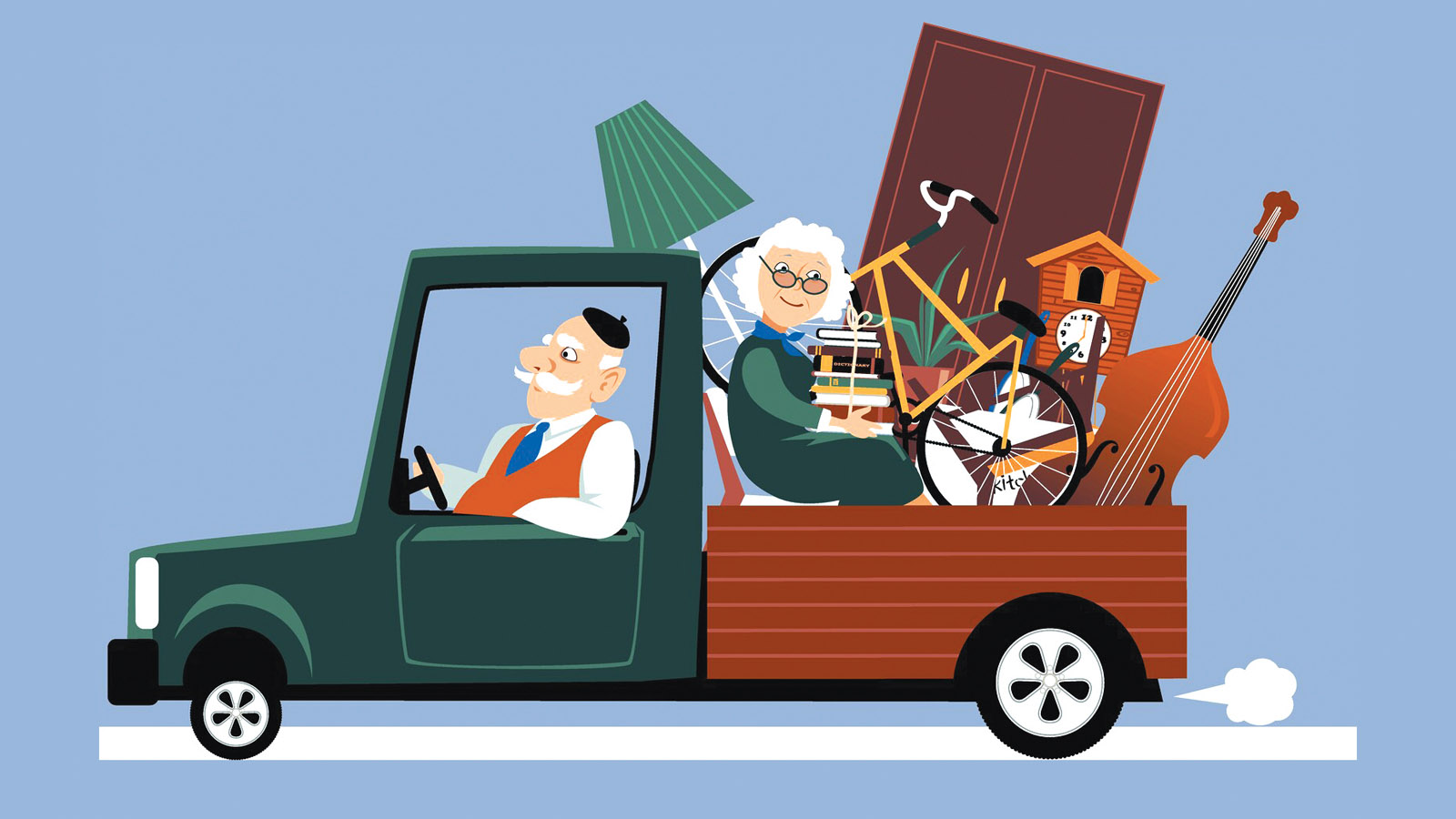What I’ve learned is that one size doesn’t fit all, and change ideas and changing circumstances. What’s right for today may not work tomorrow given emerging health or financial concerns. For example, if you’re looking for ways to encourage socializing and safer living, investigate house sharing, co-operatives, or a move into seniors living community or residence. Sometimes, these options work out to have financial advantages as well.
If your relatives is nervous, help them to find a place where they can feel safe, can continue to meet friends and participate in activities. (Volunteerism has been shown to have a more positive outcome for both men and women.)
A home safety checklist:
It is important to ensure the house or apartment is “senior safe.” More detailed tips are included in the next chapter; however, these considerations are particularly important when choosing accommodations. Make any repairs or modifications that are necessary. If it can prevent a fall or other accident, it is a wise investment.
- Are all stairs/railings in good condition?
- Are all doors, windows and locks secure?
- Are there working smoke and carbon monoxide detectors in the home?
- Are all carpets and rugs secure?
- Are electrical appliances and cords in good condition?
- Is lighting adequate?
- Do neighbours/landlords know how to reach family members?
- Are there non-slip mats in the tub and bathroom?
- Is the kitchen “senior safe”?
- Are snow and ice cleared in the winter?
- Are emergency telephone numbers by the phone?
Staying put
With support from friends and family, many of us prefer to stay in their own homes and communities for as long as possible. When health abilities decline, they often require additional support services delivered by community-based agencies. Some of these services include, meals on wheels, homemaking, transportation, friendly visiting, help with errands and telephone assurance.
If they’re staying at home and you’re on the hook, here’s what you need to do:
• Identify key medical, health and safety issues, usually in consultation with the physician, therapist and other involved professionals.
• Work through the financial costs of having your parents stay at home through sickness and health through their life expectancy. Consult with legal and financial advisors if necessary.
• Provide a detailed plan of care, identifying problems and the potential need for special services.
• Research, arrange and plan to monitor in-home car from personal support workers and homemakers.
• Be mentally prepared for a crisis to happen at any time and have a plan for who is going to be in charge.
• Ensure your relative is following a healthy diet, which is critical to his or her well-being, by planning menus, organizing meal preparation, and providing specific recipes for the home help to prepare.
• Be ready to go to doctor’s appointments, etc., to provide interpretations and follow-up if referrals to other professionals are necessary.
• Assess the safety levels in the home and implement any needed improvements.
• Organize transportation and someone to be with your loved one services if you are unable to attend appointments.
• Organize referrals to other health care professionals such as physiotherapists, occupational therapists, podiatrists, psychiatrists, dentists, etc.
• Act as a liaison to other family members who live far away, ensuring that things are going well and alerting families to problems. (A personal note here-email, it just makes things so much easier to keep everyone informed… one email went to four, sometimes five other people.)
• Be ready and know how to arrange for around-the-clock palliative care in the familiar comfort of the elder’s own home when their health fails.
Options for more supportive living
Extra help may do the trick. Your parents might be able to live comfortably in their home with the availability of homemaking, personal care, meals and shopping. Often, they are not aware of the services that are available and neither are we. Its worth the time to do some careful research into services that might be available in your area that will help maintain your parent’s lifestyle. A move to a retirement or nursing care residence that offers additional care services or hiring home helpers is becoming a popular and practical way to help your parents maintain an independent yet, supportive lifestyle. Semi-independent living options include:
1. Homecare
If services are not available or sufficient from the publicly funded health care system, or if an individual or family feels that additional services are required, they can be purchased privately through home health care providers. Insurance plans and veterans affairs may also be a source of funding.
Types of homecare
• Professional Care: Clinical or specific care provided by a registered health care professional, such as a nurse, physiotherapist, occupational therapist, nutritionist or social worker.
• Homemaker Services: Help in regular day-to-day activities, including dressing, shopping, cleaning, meal preparation, etc.
• Companions: Individuals who “spend time” with an elderly person. Tasks can range from reading to them, to preparing simple meals to taking them on outings. Many companions are volunteers from community, service or religious groups.
• Adult Day Care: Programs designed, usually for the elderly or individuals with disorders such as Alzheimer’s disease, that offer away-from-the-home care during working hours. These programs are usually held in local hospitals or community centres, and services vary.
• Full Time Attendants: A person hired to provide daily one-on-one care for a person in their home. Qualifications of attendants vary according to the tasks they need to perform. They can range from professional companions to qualified nurses.
• Respite Care: Special programs are designed for family caregivers to provide a break from the stresses and rigors of caring, or to fill in if you are sick. These programs provide experienced people to look after your loved one on a temporary basis, either in your home or at their location.
2. Continuing care retirement community (also known as life-care)
Life care will provide various types of accommodation and services, including independent rental units. These communities also offer 24-hour skilled nursing care, so residents have the option of changing the nature of their care as their needs change. While residents do pay significant entrance fees, they also enter into a binding legal agreement or life-care contract which will, for the duration of their lives, guarantee nursing and health-related services. Watch for hidden or rising costs of care when budgeting
Both retirement apartments and communities tend to be advertised in newspapers or magazines aimed at mature adults. Churches and non-profit social agencies are also good sources of referrals, as some residences are affiliated with these organizations.
3. Supportive housing or assisted living
These are community support program offered to assist older adults to maintain independence but helps them with their activities of daily living. Onsite personal support and essential homemaking services are available 24 hours a day.
4. Full-time residential care
Nursing homes and long-term care facilities provide a continuum of care in a secure setting, 24 hours a day, seven days a week. They take care of people who are no longer able to live independently in their own homes, even with a wide range of community support. A Ministry of Health case manager or social worker can assist you with choosing and preparing applications for a long-term care facility that best suits the needs of your loved one. When contemplating long-term care, caregivers are often consumed with guilt. This is normal, but should be discussed with a health professional to ensure the caregiver does not suffer any long-term effects or depression.
Long-term care facilities are also called municipal homes for the aged or nursing homes. For quick reference:
• nursing homes are usually privately run.
• municipal homes for the aged are owned and managed by local (municipal) town councils.
• charitable homes are run by not-for-profit faith, ethnic and cultural organizations.
Long-term care facilities offer a variety of accommodation options. People in the facility pay a fee for accommodation that is based on the type or style of accommodation. “Preferred” accommodation is a term used to describe private or semi-private rooms with special features, whereas basic or standard accommodation refers to the style of rooms that the facility offers in this category. All long-term care facilities have dining rooms or common rooms and they also have facilities such as lounge, beauty salon, chapel, garden or gift shop. The basic package includes the following services:
• Furnishings (e.g. bed, chair), meals (including special diets), bed linens and laundry, personal hygiene supplies, medical/clinical supplies and devices (e.g., walkers, wheelchairs for occasional use), housekeeping, pastoral services, social and recreational programs, medication administration and assistance with the essential activities of daily living.
• Nursing and personal care on a 24-hour basis and access to a physician and other health professionals.
Optional services are usually available for a fee. They may include hairdressing, cable TV and telephone services, transportation, etc.
Facilities must prepare a “plan of care” for each resident, outlining the care requirements and levels of service offered. This plan must be reviewed at least every three months and adapted as health needs change.
There are two different terms used to define the length a person stays in a facility:
1) Long Stay refers to accommodations that are obtained for an indefinite period of time.
2) Short Stay refers to temporary stays at a facility. The maximum number of days a person can stay is 90 days per year. There are two types of short stay:
• The short-stay respite service provides a caregiver with a break from caregiving duties.
• The supportive care service provides the resident support to regain strength and confidence, usually following a stay in a hospital.














